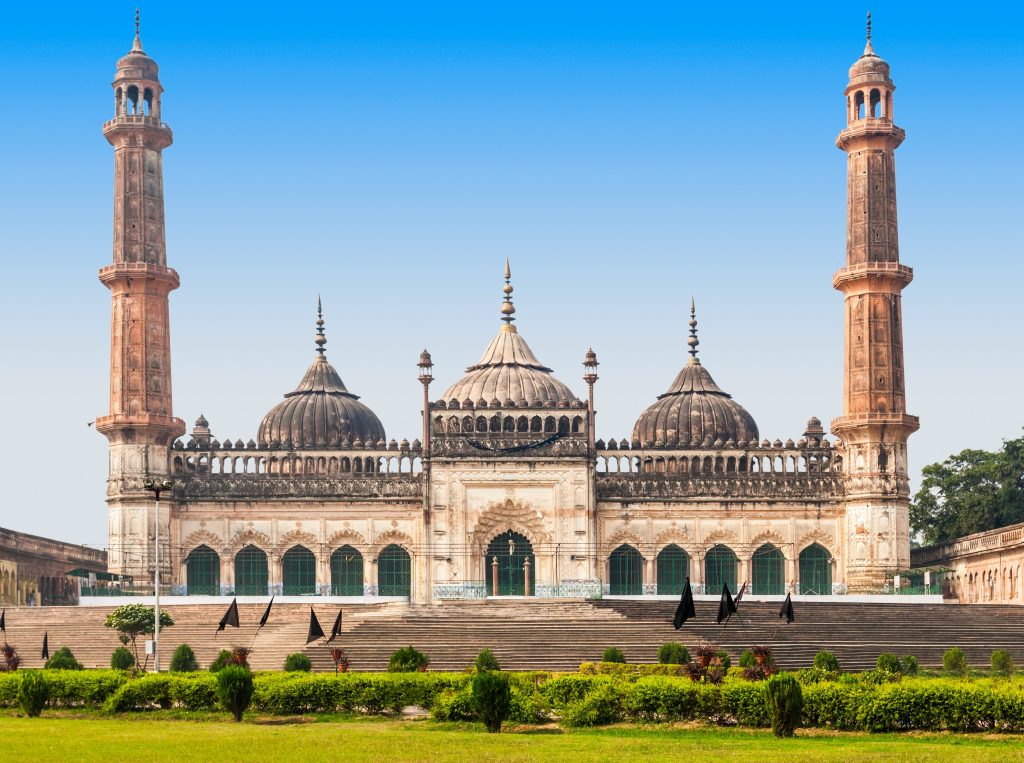Abhishek Kumar
India receives a considerable influx of tourists each year, and its religious and cultural riches highlight the remarkable contribution Indian civilization has made to world heritage. India has a long and rich history, with numerous examples of stunning and innovative designs being built over the centuries, one of them being Mosque architecture. Mosque architecture often varies significantly from region to region, and from period to period, depending on local traditions. Traditional mosque architecture is based on Islamic and Arabic architectural styles, with varying degrees of influence from Central Asian or Persian architecture.
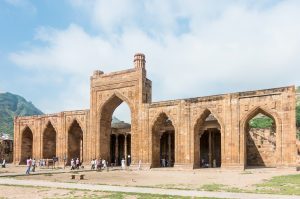
Mosque architecture in India is a blend of both Islamic and Hindu influences, creating a distinct multi-cultural and multi-religious style. The architecture is uniquely marked by its domes, minarets and arches, but other regional influences can also be seen. Design elements often include carved stonework, colourful tiles, intricate woodcarvings, large wrought iron gates and floral designs. Mosques are places of worship for Muslims, and their architecture is an important aspect of the religion. Mosques are typically designed to be welcoming and inclusive spaces, with a focus on simplicity and functionality. There are several architectural elements that are common to most mosque designs:
- Minarets: These are tall, slender towers that are often located at the corners of the mosque. Minarets are used to call the faithful to prayer, and they can be found in many different styles depending on the region and the time period in which the mosque was built.
- Dome: Many mosques have a large dome that sits atop the main prayer hall. Domes are often decorated with intricate patterns and designs, and they serve to create a sense of grandeur and majesty within the mosque.
- Arches: Arches are a common feature in mosque architecture, and they are used to create a sense of space and openness within the building. Arches can be found in the walls, ceilings, and doorways of the mosque.
- Courtyard: Many mosques have a courtyard that is surrounded by the main prayer hall and other buildings. The courtyard is often used for gatherings and other activities, and it can be a place for worshippers to relax and socialize before or after prayers.
- Calligraphy: Calligraphy is an important element of mosque architecture, and it is used to decorate the walls and other surfaces of the building. Calligraphy is often used to inscribe verses from the Quran or other important texts.
- A mihrab: This is a niche in the wall of the mosque that indicates the direction of Mecca, which is the direction that Muslims face when they pray.
- A minbar: This is a raised platform or pulpit from which the imam (leader of the mosque) delivers sermons or lectures.
- A qibla wall: This is the wall of the mosque that is aligned with the direction of Mecca.
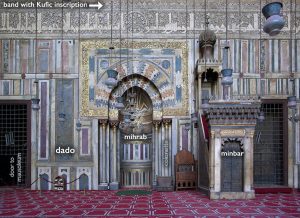
Indian mosque architecture is highly diverse and is a reflection of the regional and cultural influences in the country. As a result, mosques in India often display a mix of architectural styles, ranging from traditional to modern. The most common style of mosque architecture in India is known as the Indo-Saracenic style. This style combines elements from both Indian and Islamic architecture, such as domes, minarets, and arches. This style is seen in many of the famous mosques in India, including the Jama Masjid in Delhi and the Taj Mahal in Agra. Other styles of mosque architecture in India include the Mughal style, which is characterized by its use of red sandstone and marble, and the Deccan style, which is seen in the mosques of Hyderabad and Bijapur. Each of these styles has its own unique characteristics and features, making them distinct from one another. Despite their differences, however, all of these styles are united in their focus on creating a place of worship that is both beautiful and meaningful.
Early Mosque Architecture
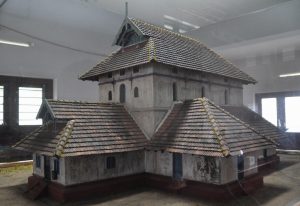
Mosque architecture in India is heavily influenced by Islamic culture and the country’s long history of Muslim rule. The earliest surviving mosques in India date back to the 12th century, although the earliest extant examples of the style can be found in Gujarat, which dates back to the 8th century. Over the centuries, mosque architecture has evolved, incorporating elements from both local and foreign styles. The first mosques in India were built by Arab traders and missionaries in the 7th and 8th centuries, and over time, the style of mosque architecture in India evolved to incorporate elements from various regional styles, such as Indian, Persian, and Turkish. The history of mosque architecture in India dates back to the arrival of Islam in the subcontinent in the 7th century. The earliest mosques in India were simple single-room structures made of brick or stone and covered with a roof. These early mosques were often built on the site of temples or other religious buildings that had been converted to Islam, and they often incorporated elements of the original architecture into their design. As Islam spread throughout India, the style and design of mosques evolved to reflect the diverse cultural influences of the region.

Dating back to 629 CE, Cheraman Juma Masjid in Kerala is considered to be the first in India. Built by the Arab Malik Deenar – who is considered to be a contemporary of Prophet Muhammad, and a propagator of Islam in the subcontinent – this ancient structure has been renovated many times over the years. Its first renovation dates to the 11th century CE; however it remains an active place of worship and intrigue for Muslims and non-Muslims alike. Along with its distinct Kerala-style architecture, the landmark mosque also contains an ancient oil lamp which is considered to have been burning continuously for more than a thousand years.
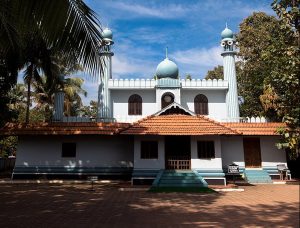
Another example of an early mosque is Kadal Karai Palli in Kayalpatnam, the second mosque to be built by Arab traders in 633 CE. It lies on the south side of the present Kosmarai Dargha. Kayalpatnam, a well-known town adjacent to the popular town of Tiruchendur, has a rich and ancient history due to early Islamic infrastructure. The old mosques and tombs in Kayalpattinam are not only among the most significant Islamic monuments in South India but also have an important place in the architecture of the Islamic architecture developed on the southern coasts of the subcontinent and provided a link between the architecture of north-west India and that of the Islamic for east. These monuments include the Ahamed Nainar Mosque, the Qudirya Mosque complex or Qadirya Kodimarasirunainarpalli, the tomb of Shawaaldin and the two greater and smaller Jamia mosques known as Kutba Periyapalli and Kutba Sirupalli. The two other old Mosques in this area are smaller in size but are of considerable importance as monuments.
Islamic Mosque Architecture
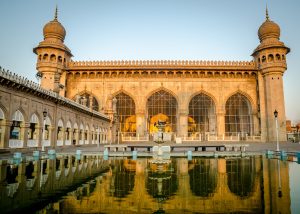
From 1200 AD to 1500 AD, the architecture of mosques in India was heavily influenced by Islamic and Persian architectural styles as well as by local Indian styles. Mosques built during this time period were characterized by the use of arches, domes, and minarets, as well as by the use of ornate decorative elements such as calligraphy and geometric patterns. One of the most notable examples of mosque architecture from this period is the Quwwat-ul-Islam Mosque in Delhi, built in 1193 AD. This mosque was constructed using materials from destroyed Hindu and Jain temples, and it features a large central dome, four smaller domes, and numerous arches and pillars.
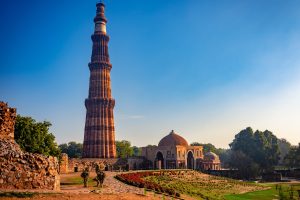
Other examples of mosque architecture from this period include the Adhai Din Ka Jhonpra Mosque in Ajmer, which was built in 1153 and is known for its ornate calligraphy and geometric patterns. In addition to these more well-known examples, there are many other mosques in India from this time period that are worth exploring for their unique architectural styles and histories. These include the Alai Darwaza in Delhi, the Gol Gumbaz in Bijapur, and the Jami Masjid in Bidar, among others. Islamic architecture can be seen in every corner of India. The West offers the predominantly Islamic heritage site of Champaner in Gujarat, and the East boasts of the Nakhoda Masjid in Kolkata. Gedu Mia Ki Masjid in Tripura is the North-East’s tribute to Islamic influences.
Mughal Mosque Architecture
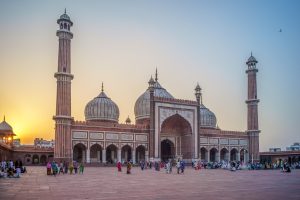
The Mughal Empire left a significant architectural legacy in the country. Mughal architecture in India was a fusion of local and imported building styles, techniques and traditions, a mixture of local talent and inspirations from Iran, Arabia, and Central Asia. The Mughal architecture of India refers to a style of architecture developed under the Mughal Empire, which lasted in India from the early 16th to the mid-19th century. The Mughal emperors were of Mongol origin and were great patrons of art and architecture, and their rule saw the development of a distinctive style of Islamic architecture in India. Many mosques in India were built during this period (1526-1857), and reflect Mughal architectural styles, which are a blend of Indian, Persian, Turkish and Islamic styles. One notable feature of Mughal mosque architecture in India is the use of domes, which are often large and decorative. The domes are typically supported by a series of arches and are often topped with a finial. The walls of Mughal mosques are often adorned with intricate carvings and inlaid with precious stones. Other common features of mosque architecture in India include minarets, which are tall, slender towers that are used for the call to prayer. Mosques also often have large courtyards, which are used for gathering and prayer.
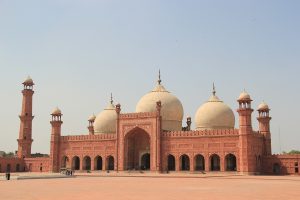
Mughal mosques were typically built with red sandstone or marble and were characterized by their large size, grandeur, and elaborate ornamentation. The interiors of Mughal mosques were adorned with intricate geometric patterns and calligraphy, and the exteriors were often adorned with arches, domes, and minarets. One of the most famous Mughal mosques in India is the Jama Masjid in Delhi, which was built by the Mughal emperor Shah Jahan in the mid-17th century. The mosque is a testament to the grandeur of Mughal architecture, with its large courtyard, grand arches, and towering minarets. Other notable Mughal mosques in India include the Moti Masjid in Agra and the Taj Mahal in Agra, both of which were also built by Shah Jahan. Mughal architecture had a significant influence on the development of Islamic architecture in India, and many of the country’s most iconic buildings, such as the Taj Mahal and the Red Fort in Delhi, are examples of Mughal-style architecture. In addition to these well-known examples, there are many other Mughal mosques scattered throughout India, each with its unique architectural style and features. These buildings continue to be an important part of India’s cultural and architectural heritage.
Modern Mosque Architecture
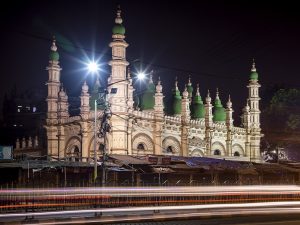
Modern mosque architecture in India has been developed as a result of the country’s cultural diversity and its long history of Islamic rule. Influenced by a variety of styles and traditions, including Islamic, Mughal, and regional Indian styles, many modern mosques in India are designed with a blend of traditional Islamic and contemporary architectural styles. The most prominent feature of modern mosque architecture in India is its use of Islamic elements such as arches, domes, and minarets. The mosques usually have elaborate courtyards, often with gardens and fountains. Many of the mosques also feature intricate geometric and floral designs in the walls and ceilings. Some of the unique modern designs of mosques in India feature large open spaces, abstract shapes, and curved surfaces that reflect light in a dramatic way. Many of the mosques also incorporate modern materials such as glass, steel, and concrete in their designs. The aesthetic of the mosque is intended to reflect the beauty of the Islamic faith and culture. Many modern mosques in India are also equipped with modern amenities such as air conditioning and audio-visual systems. Additionally, many Indian mosques are now incorporating sustainable materials and green technologies, such as energy-efficient lighting and water conservation systems.
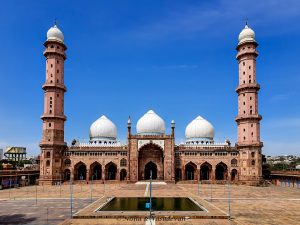
One example of modern mosque architecture in India is the Taj-ul-Masjid in Bhopal, which is one of the largest mosques in India. The mosque is built in a combination of traditional Islamic and Mughal styles and features a large central dome, four minarets, intricate carvings and decorations, with interiors spanning about 430,000 square feet. This mosque in Bhopal has a name that literally translates to ‘crown among mosques.’ This 19th-century mosque features an iconic pink facade, topped by two 18-storey high towers with marble domes, and is located by a lake known as Motia Talab. Another one is the Hazratbal Mosque in Srinagar, which was built in the 1960s and features a modern, minimalist design with a large white dome and a spacious prayer hall. Another example is the Baitul Mukarram Mosque in Kolkata, which was built in the 1960s and features a combination of traditional Mughal and modern design elements, including a large central dome and four smaller domes.

In addition to these traditional styles, there are also many modern mosques in India that incorporate more contemporary architectural elements, such as sleek lines and geometric shapes. These mosques often feature large, open spaces with minimal ornamentation and a focus on functionality. Modern mosque architecture in India reflects the diverse cultural and architectural influences that have shaped the country’s history and identity.
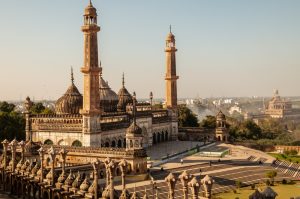
History is rife with tales of the people who created these architectural wonders and their origins. While the love story behind the Taj Mahal is well known, that of the Cheraman Juma Masjid in Kerala is less so. India has the second-largest Muslim population and more than 300,000 mosques. Many of the mosques in India have a lengthy and illustrious past spanning back hundreds of years. The design of mosques in India has changed over time and reflects the regional cultural and historical influences. Although Islamic architecture has long been renowned for its complex artwork and designs, the grandeur of the Mughal Empire was so great that their legacy is still visible in the majestic palaces, tombs, and places of worship they left behind. In the well-known mosques all around India, you may witness some of their best examples of quintessential designs. Overall, mosque architecture in India is characterized by a blend of different architectural styles, including Indian, Islamic, and European influences. It is a testament to the country’s rich cultural and religious history.
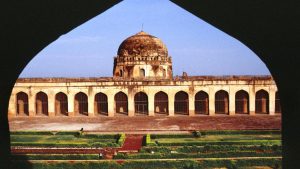
References:
- https://www.khanacademy.org/humanities/ap-art-history/introduction-cultures-religions-apah/islam-apah/a/introduction-to-mosque-architecture
- https://www.dailysabah.com/arts/a-journey-into-indo-islamic-architecture-with-masterpieces/news
- https://www.thehindu.com/features/friday-review/history-and-culture/from-the-pages-of-history/article2295239.ece
- http://www.jicrjournal.com/gallery/134-jicr-october-3332.pdf
- https://www.jstor.org/stable/10.1163/j.ctv4cbgx7.7
- https://www.jstor.org/stable/4299804
- https://www.masjed.ir/Content/media/article/DPC0262_0.pdf
- https://en.wikipedia.org/wiki/Indo-Islamic_architecture#:~:text=Major%20examples%20of%20Mughal%20architecture,Badshahi%20Masjid%20and%20Moti%20Masjid
- https://ncert.nic.in/textbook/pdf/kefa108.pdf
- https://prepp.in/news/e-492-major-aspects-of-indo-islamic-architecture-ncert-art-and-culture-notes
- https://library.oapen.org/bitstream/handle/20.500.12657/29584/1000348.pdf?sequence=1&isAllowed=y
- shorturl.at/agks8

